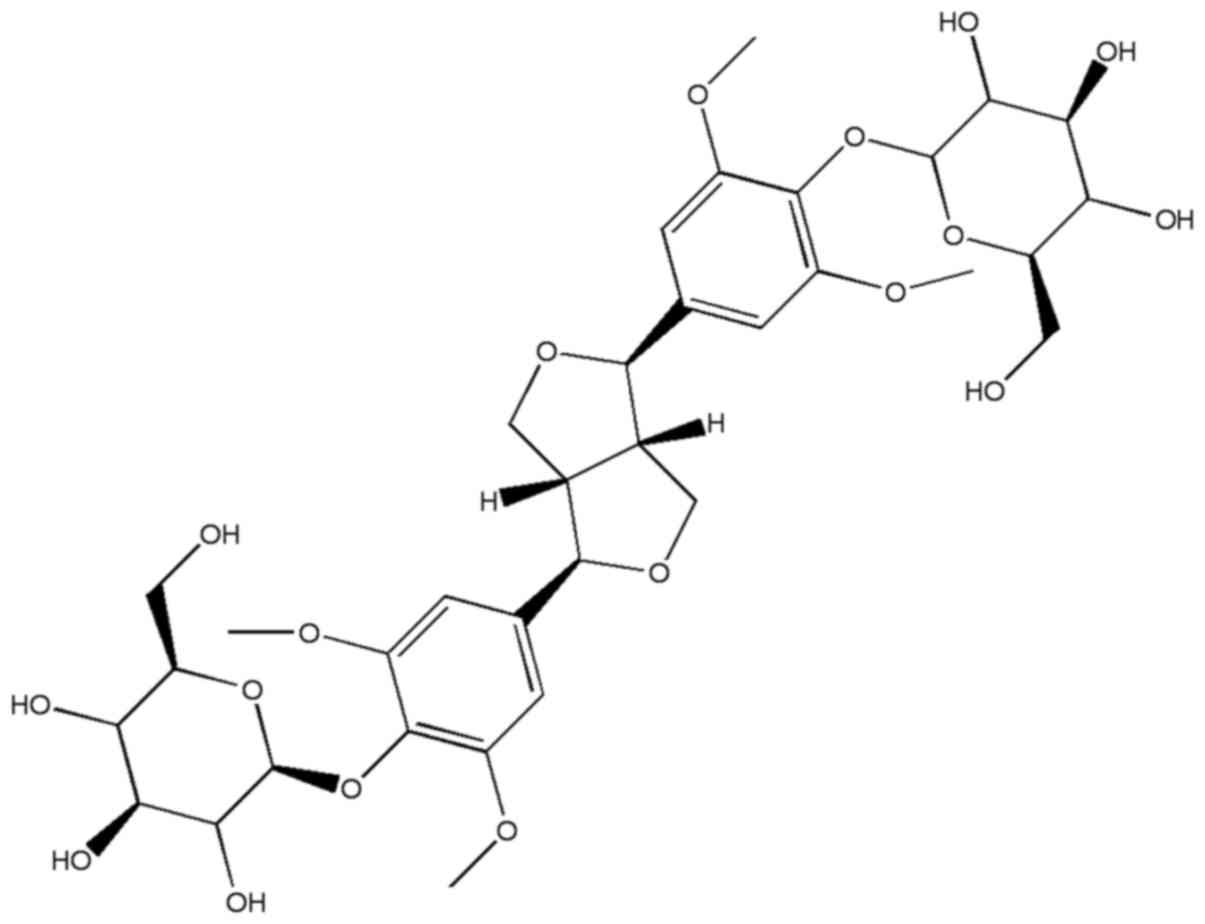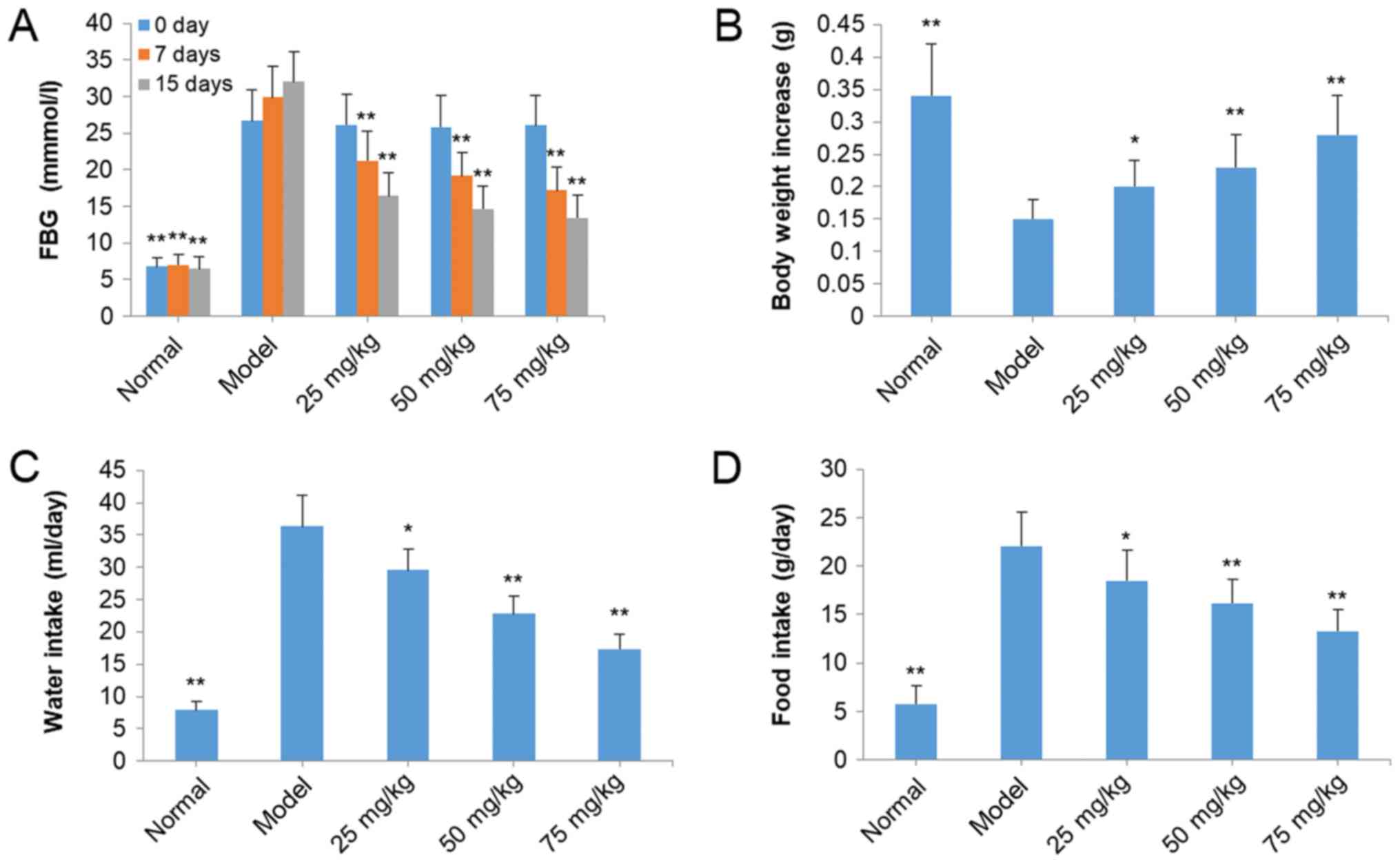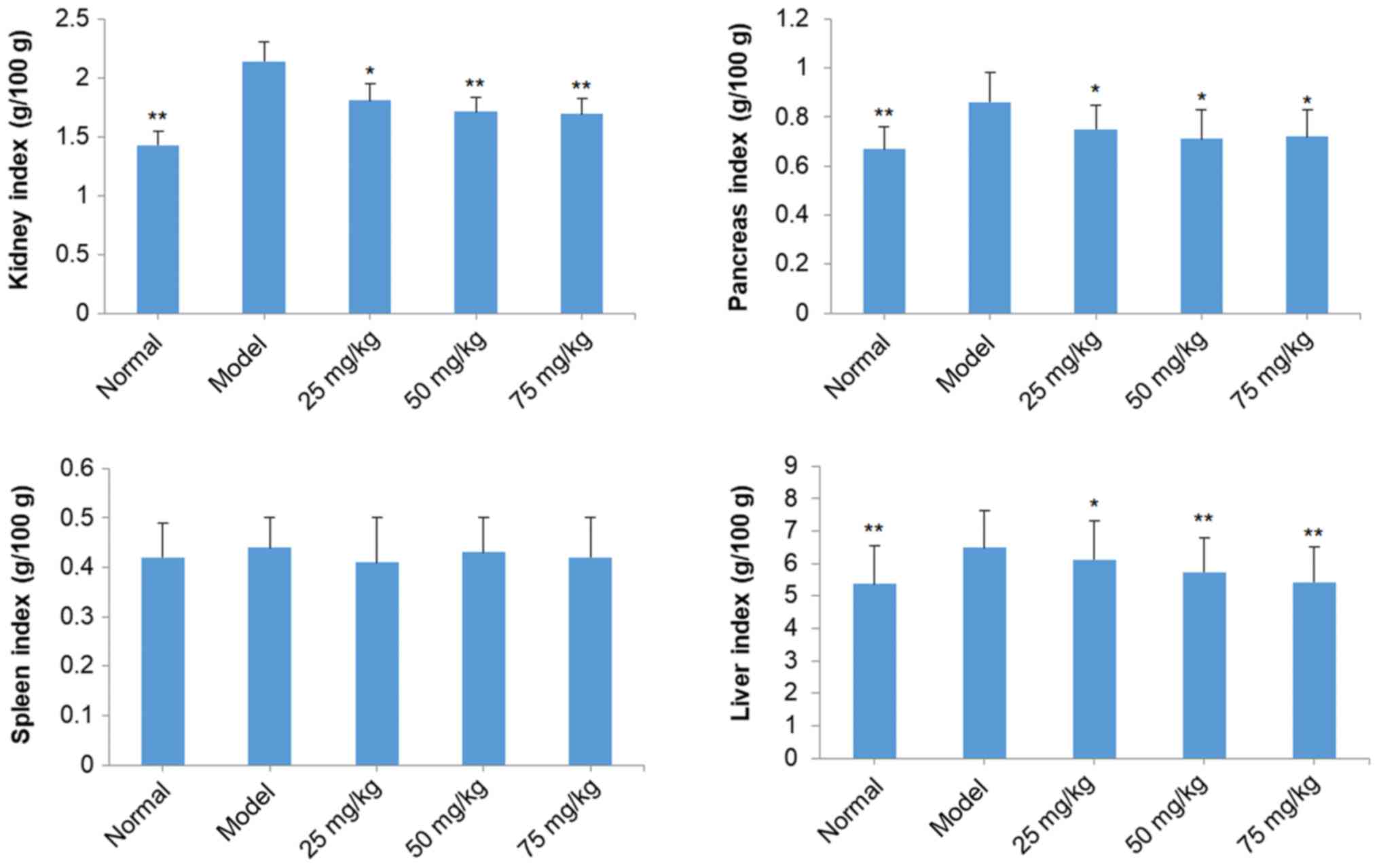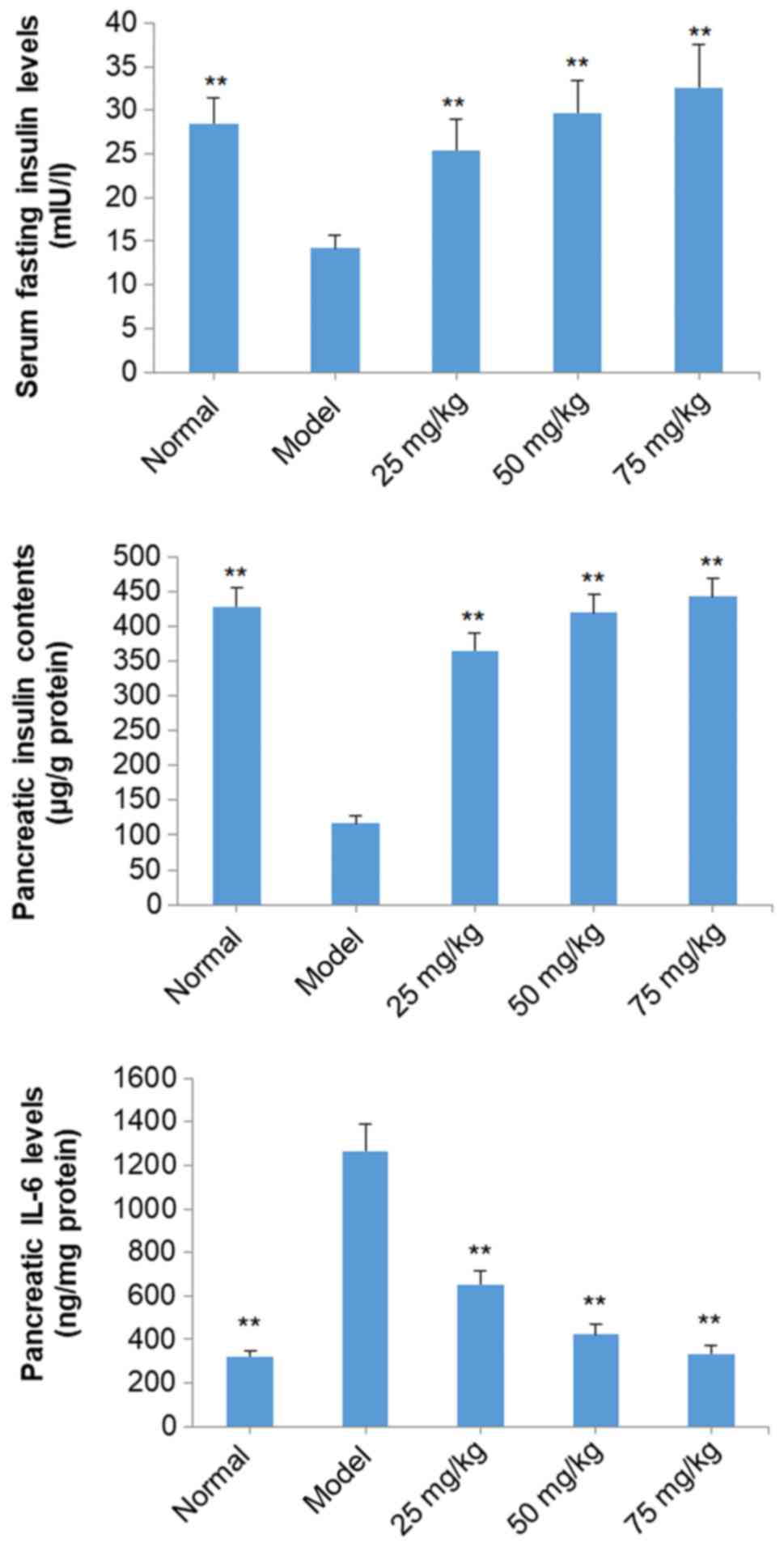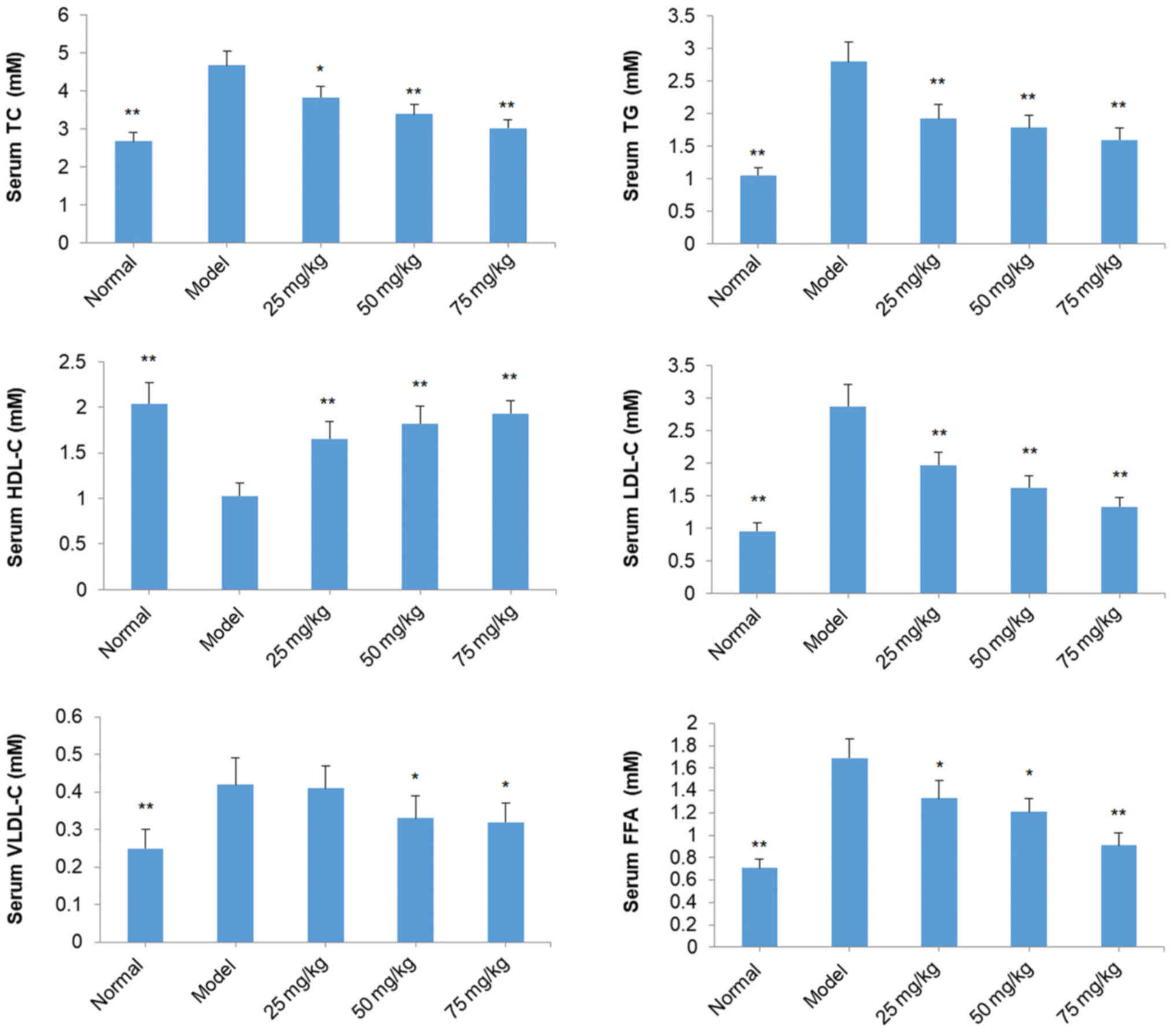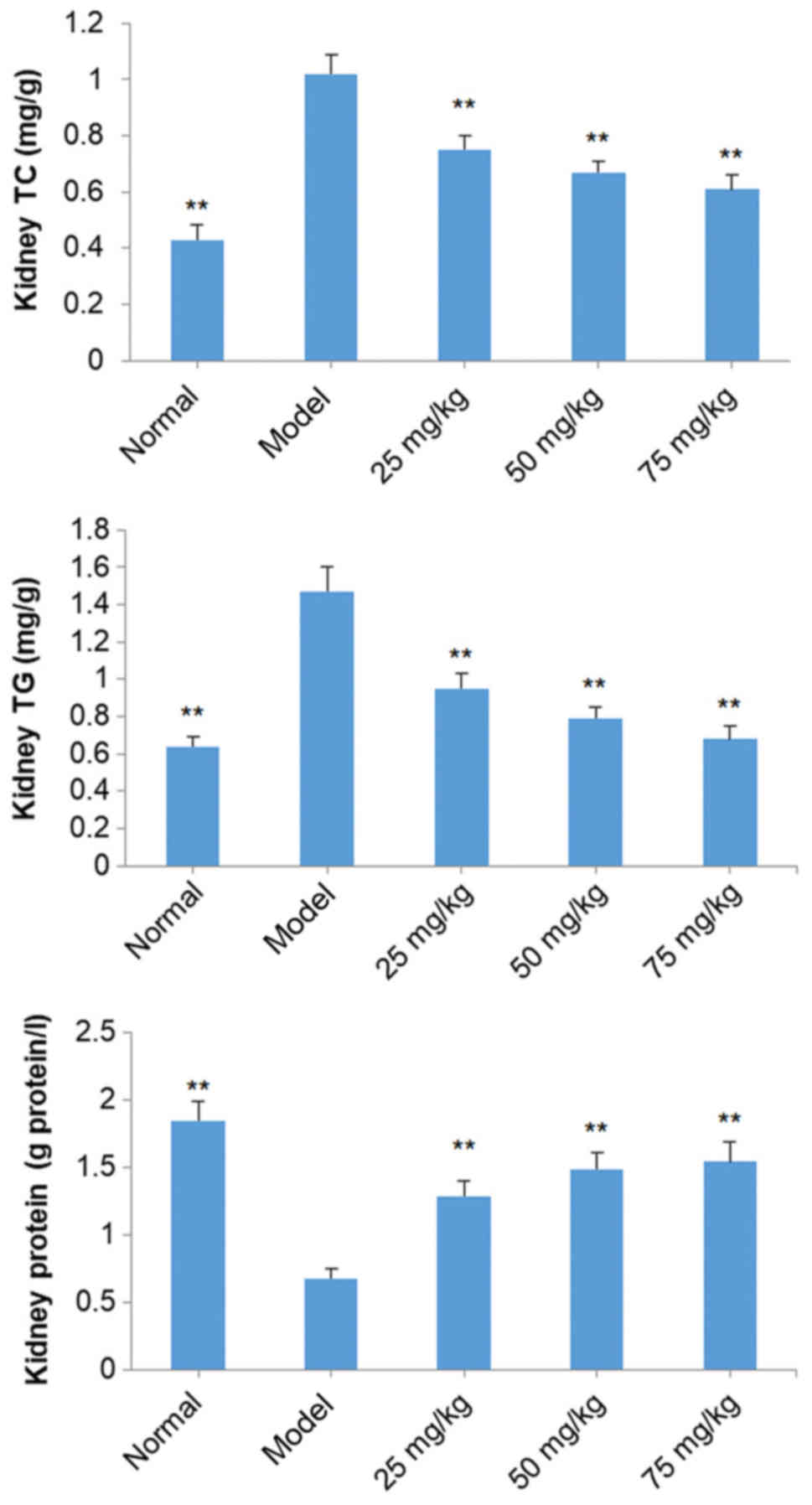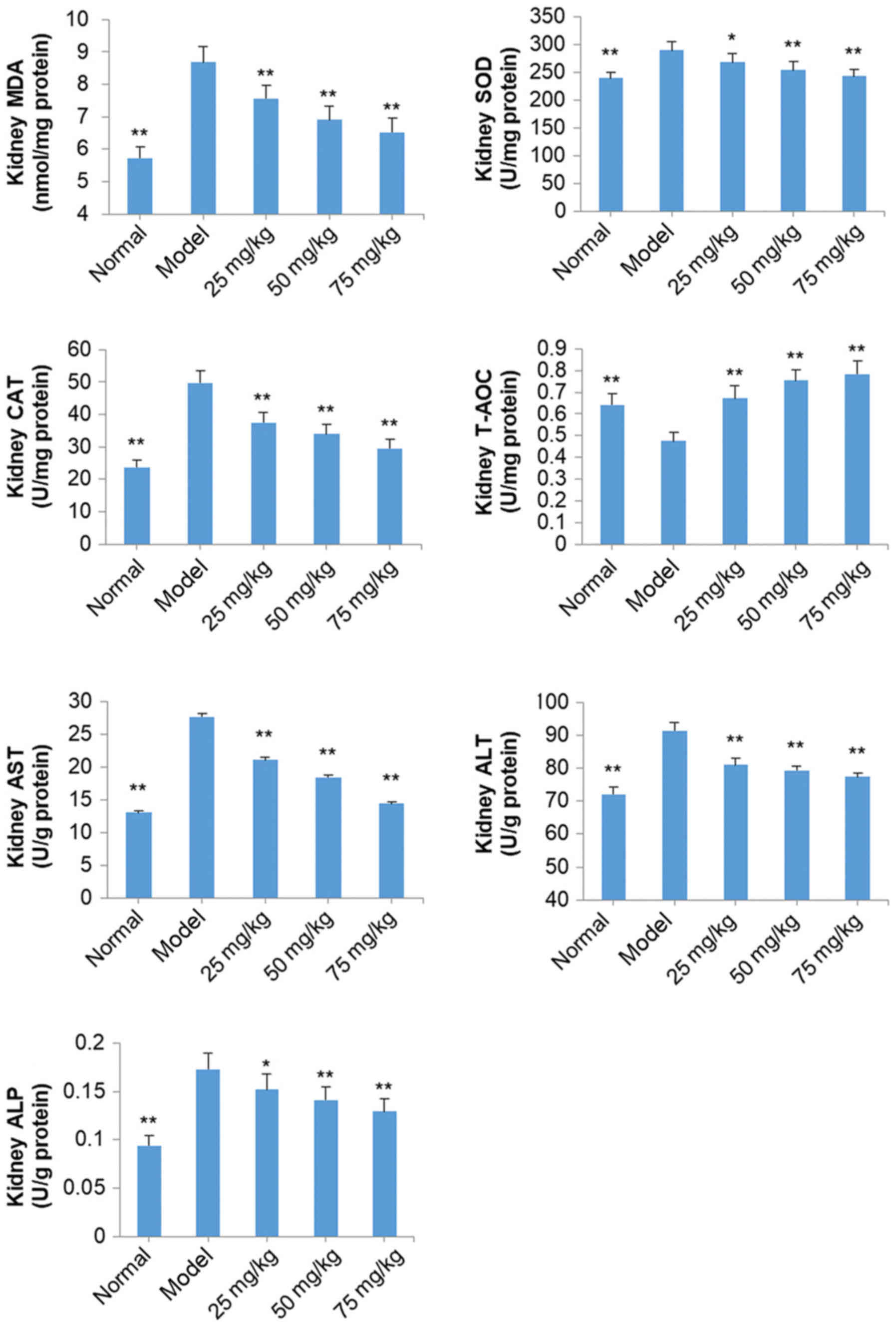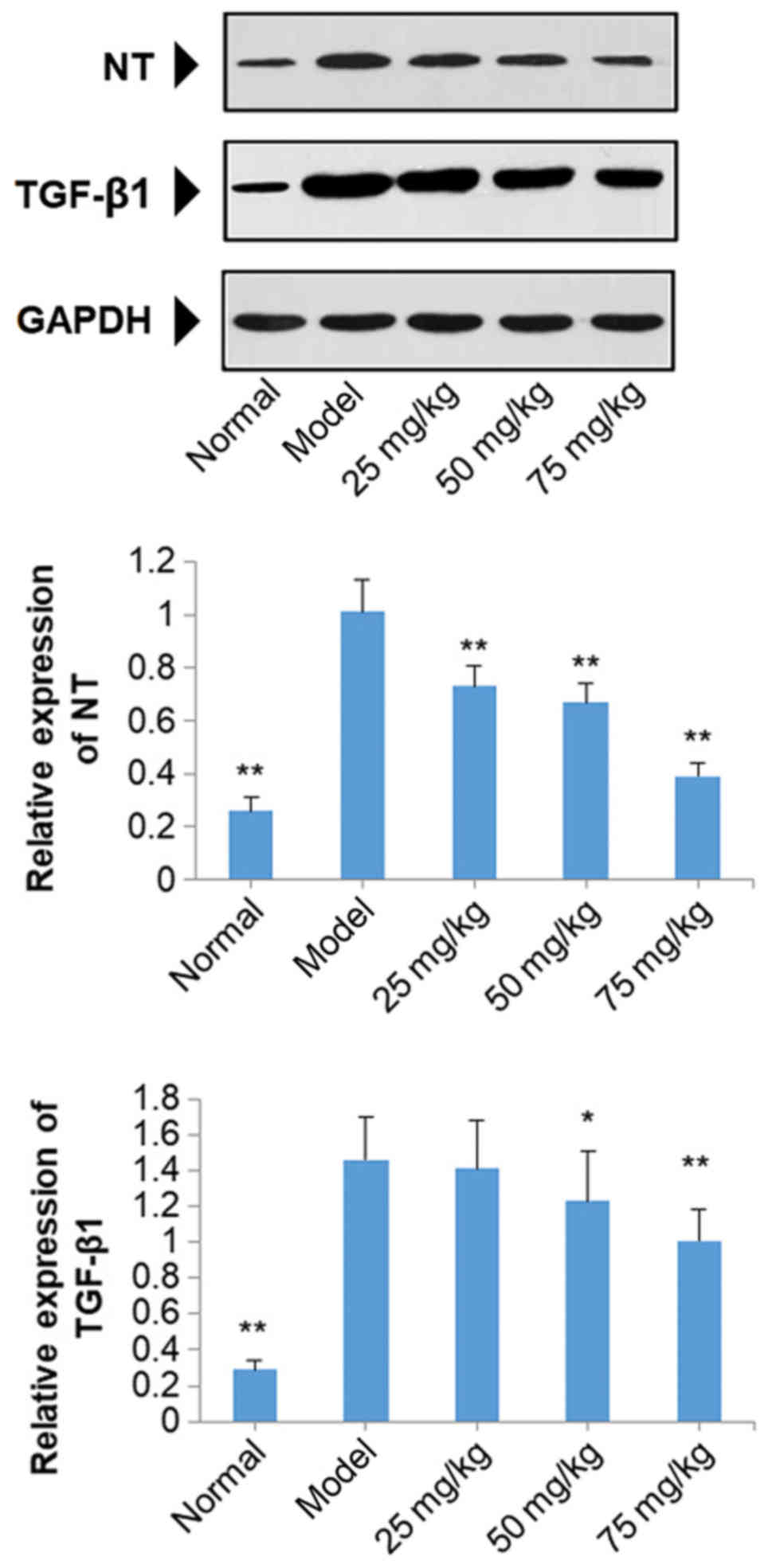|
1
|
Wild S, Roglic G, Green A, Sicree R and
King H: Global prevalence of diabetes: Estimates for the year 2000
and projections for 2030. Diabetes Care. 27:1047–1053. 2004.
View Article : Google Scholar : PubMed/NCBI
|
|
2
|
Mrudula T, Suryanarayana P, Srinivas PN
and Reddy GB: Effect of curcumin on hyperglycemia-induced vascular
endothelial growth factor expression in streptozotocin-induced
diabetic rat retina. Biochem Biophys Res Commun. 361:528–532. 2007.
View Article : Google Scholar : PubMed/NCBI
|
|
3
|
Danaei G, Finucane MM, Lu Y, Singh GM,
Cowan MJ, Paciorek CJ, Lin JK, Farzadfar F, Khang YH, Stevens GA,
et al: National, regional, and global trends in fasting plasma
glucose and diabetes prevalence since 1980: Systematic analysis of
health examination surveys and epidemiological studies with 370
country-years and 2.7 million participants. Lancet. 378:31–40.
2011. View Article : Google Scholar : PubMed/NCBI
|
|
4
|
Ruiz-Ramos M, Escolar-Pujolar A,
Mayoral-Sánchez E, Laureano Corral-San F and Fernández-Fernández I:
Diabetes mellitus in Spain: Death rates, prevalence, impact, costs
and inequalities. Gac Sanit. 20 Suppl 1:S15–S24. 2006. View Article : Google Scholar
|
|
5
|
Kim SH, Hyun SH and Choung SY:
Anti-diabetic effect of cinnamon extract on blood glucose in db/db
mice. J Ethnopharmacol. 104:119–123. 2006. View Article : Google Scholar : PubMed/NCBI
|
|
6
|
Ezeja MI, Anaga AO and Asuzu IU:
Antidiabetic, antilipidemic, and antioxidant activities of Gouania
longipetala methanol leaf extract in alloxan-induced diabetic rats.
Pharm Biol. 53:605–614. 2015. View Article : Google Scholar : PubMed/NCBI
|
|
7
|
Reddy VP, Zhu X, Perry G and Smith MA:
Oxidative stress in diabetes and Alzheimer's disease. J Alzheimers
Dis. 16:763–774. 2009. View Article : Google Scholar : PubMed/NCBI
|
|
8
|
Huang J, Yang Y, Hu R and Chen L:
Anti-interleukin-1 therapy has mild hypoglycaemic effect in type 2
diabetes. Diabetes Obes Metab. 20:1024–1028. 2018. View Article : Google Scholar : PubMed/NCBI
|
|
9
|
Li JY, Liu XM, Li B and Li M: Research
progress in the symptom and treatment of diabetic nephropathy.
Diabetes New World. 20:70–72. 2015.(In Chinese).
|
|
10
|
Newman DJ and Cragg GM: Natural products
as sources of new drugs from 1981 to 2014. J Nat Prod. 79:629–661.
2016. View Article : Google Scholar : PubMed/NCBI
|
|
11
|
Peng W, Shen W, Lin B, Han P, Li C, Zhang
Q, Ye B, Rahman K, Xin H, Qin L and Han T: Docking study and
antiosteoporosis effects of a dibenzylbutane lignan isolated from
Litsea cubeba targeting Cathepsin K and MEK1. Med Chem Res.
27:2062–2070. 2018. View Article : Google Scholar
|
|
12
|
Xie W and Du L: Diabetes is an
inflammatory disease: Evidence from traditional Chinese medicines.
Diabetes Obes Metab. 13:289–301. 2011. View Article : Google Scholar : PubMed/NCBI
|
|
13
|
Chinese Pharmacopoeia Commission, .
Pharmacopoeia of the People's Republic of China Part IPeople's
Medical Publishing House. Beijing: pp. 3062015
|
|
14
|
Liu J, Zhang H, Ji B, Cai S, Wang R, Zhou
F, Yang J and Liu H: A diet formula of Puerariae radix, Lycium
barbarum, Crataegus pinnatifida, and Polygonati rhizoma
alleviates insulin resistance and hepatic steatosis in CD-1 mice
and HepG2 cells. Food Funct. 5:1038–1049. 2014. View Article : Google Scholar : PubMed/NCBI
|
|
15
|
Chen H, Feng SS, Sun YJ, Hao ZY, Feng WS
and Zheng XK: Advances in studies on chemical constituents of three
medicinal plants from Polygonatum Mill. and their
pharmacological activities. Chin Tradit Herb Drugs. 46:2329–2338.
2015.
|
|
16
|
National Institute of Health, . USA:
Public health service policy on humane care and use of laboratory
animals; 2002
|
|
17
|
Jin DK: Antidiabetic effect of DMDD
Isolated from Averrhoa carambola L. roots on STZ-induced
diabetic mice and its potential mechanism (unpublished PhD thesis).
Guangxi Medical University. 2014.
|
|
18
|
Rakieten N, Rakieten ML and Nadkarni MV:
Studies on the diabetogenic action of streptozotocin (NSC-37917).
Cancer Chemother Rep. 29:91–98. 1963.
|
|
19
|
Kintoko K and Huang R: Mechanism of
insulin resistance in type 2 diabetes mellitus. Proceeding of
International Symposium on Progress in Pharmacology. 2013.
|
|
20
|
Russell DW: Cholesterol biosynthesis and
metabolism. Cardiovasc Drugs Ther. 6:103–110. 1992. View Article : Google Scholar : PubMed/NCBI
|
|
21
|
Ibrahim SRM, Mohamed GA, Banjar ZM and
Kamal HKM: Natural antihyperlipidemic agents: Current status and
future persepctives. Phytopharmacology. 4:492–531. 2013.
|
|
22
|
Grundy SM, Cleeman JI, Rifkind BM and
Kuller LH: Cholesterol lowering in the elderly population.
Coordinating Committee of the National Cholesterol Education
Program. Arch Intern Med. 159:1670–1678. 1999. View Article : Google Scholar : PubMed/NCBI
|
|
23
|
Mahmood ZA, Ahmed SW, Sualeh M and Mahmood
SBZ: Hyperlipidemia development and consequences. Med Channel.
5:14–17. 2009.
|
|
24
|
Weng X: Research progress of treatment of
diabetic nephropathy in traditional Chinese medicine. Asia-Pacific
Tradit Med. 2:62–63. 2015.(In Chinese).
|
|
25
|
Lv SQ, Zhang SF, Wang ZQ, Song HL, Han ZQ,
Su XH, Liu AR, Wang YS, Yu WX and Chi XE: Protective effect of
jianpi gushen huayu decoction on diabetic nephropathy rats. Chin J
Exp Tradi Med Formulae. 24:142–147. 2018.
|
|
26
|
Kim HJ, Lee SG, Chae IG, Kim MJ, Im NK, Yu
MH, Lee EJ and Lee IS: Antioxidant effects of fermented red ginseng
extract in streptozotocin-induced diabetic rats. J Ginseng Res.
35:129–137. 2011. View Article : Google Scholar : PubMed/NCBI
|
|
27
|
Kakkar R, Kalra J, Mantha SV and Prasad K:
Lipid peroxidation and activity of antioxidant enzymes in diabetic
rats. Mol Cell Biochem. 151:113–119. 1995. View Article : Google Scholar : PubMed/NCBI
|
|
28
|
Manna P, Sinha M and Sil PC: Protective
role of arjunolic acid in response to streptozotocin-induced type-1
diabetes via the mitochondria dependent and independent pathways.
Toxicol. 257:53–63. 2009. View Article : Google Scholar
|
|
29
|
Maritim AC, Sanders RA and Watkins JB III:
Diabetes, oxidative stress, and antioxidant: A review. J Biochem
Mol Toxicol. 17:24–38. 2003. View Article : Google Scholar : PubMed/NCBI
|
|
30
|
Winterbourne CC: Superoxide as
intracellular radical sink. Free Radic Biol Med. 14:85–90. 1993.
View Article : Google Scholar : PubMed/NCBI
|
|
31
|
Sies H: Total antioxidant capacity:
Appraisal of a concept. J Nutr. 137:1493–1495. 2007. View Article : Google Scholar : PubMed/NCBI
|
|
32
|
Okada M, Murakami Y and Miyamoto E:
Glycation and inactivation of aspartate aminotransferase in
diabetic rat tissues. J Nutr Sci Vitaminol (Tokyo). 43:463–469.
1997. View Article : Google Scholar : PubMed/NCBI
|
|
33
|
Leibovitch I, Ben-Chaim J, Ramon J and
Goldwasser B: Increased serum alkaline phosphatase activity: A
possible indicator of renal damage. J Clin Lab Anal. 5:406–409.
1991. View Article : Google Scholar : PubMed/NCBI
|
|
34
|
Ceriello A, Mercuri F, Quagliaro L,
Assaloni R, Motz E, Tonutti L and Taboga C: Detection of
nitrotyrosine in the diabetic plasma: Evidence of oxidative stress.
Diabetologia. 44:834–838. 2001. View Article : Google Scholar : PubMed/NCBI
|
|
35
|
Fang F, Wu YG, Dong J, Ren KJ, Qi XM,
Liang C and Zhang W: Effects of total glucosides of paeony on
oxidative stress in renal tissue of diabetic rats. Chin J Pharmacol
Toxicol. 22:199–204. 2008.(In Chinese).
|















